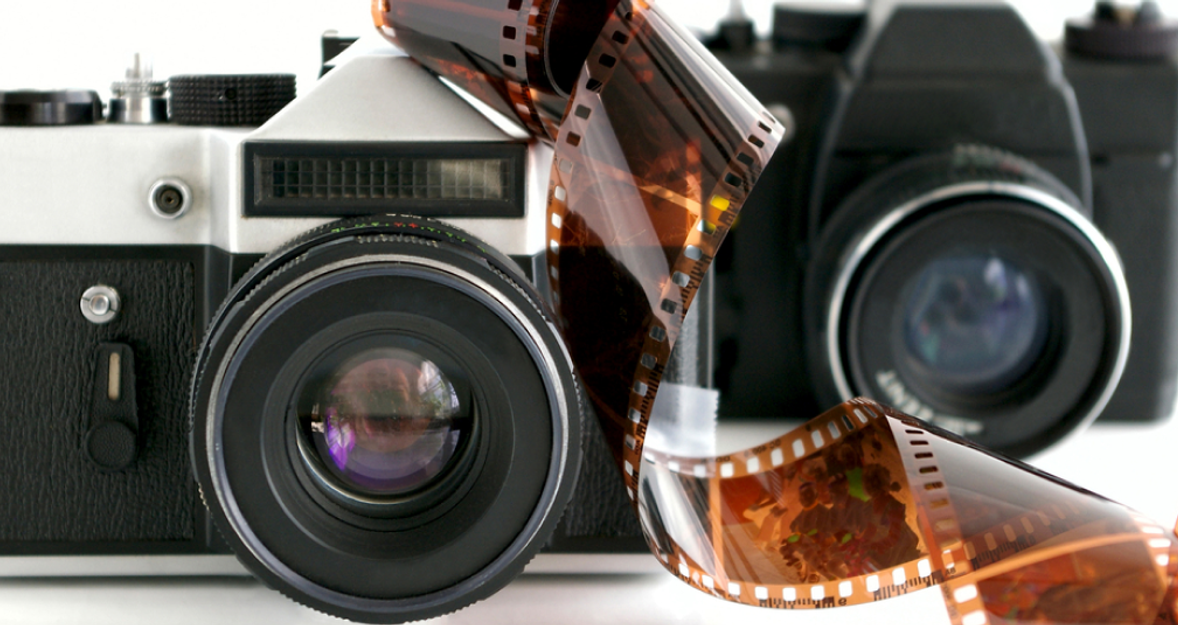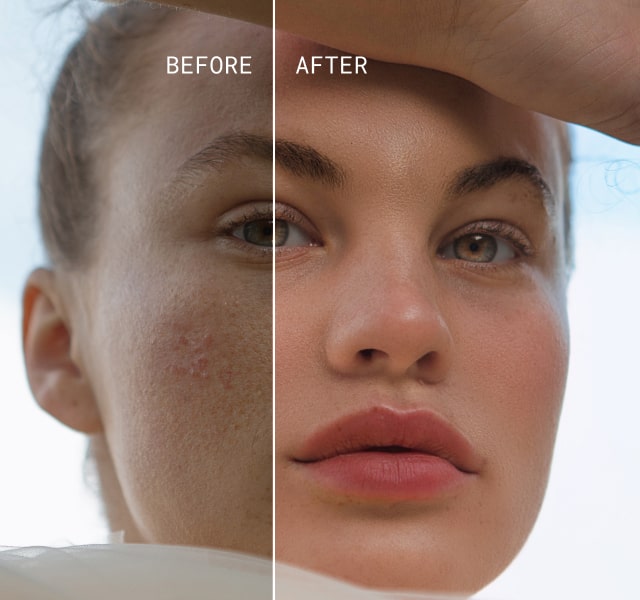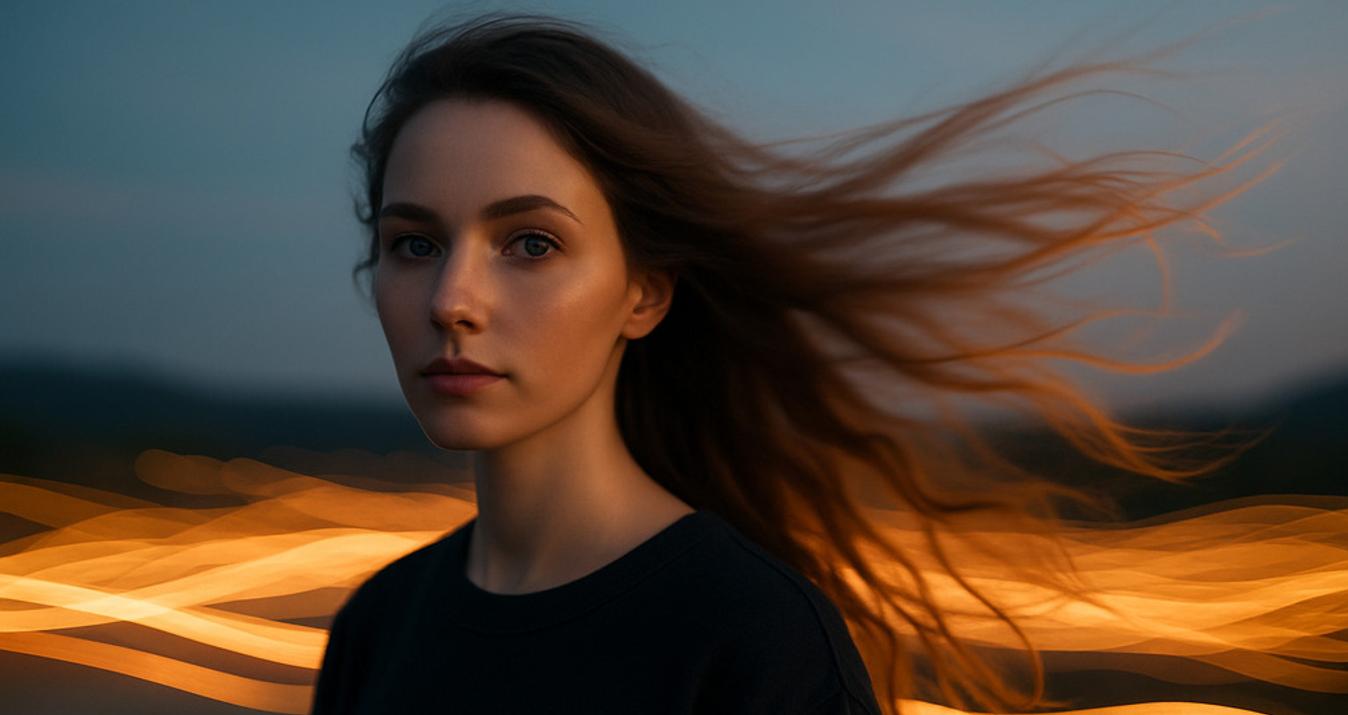Tips For Taking Good Portraits On Film
September 01, 2025

Every year, more photographers are rediscovering analog photography. The timeless qualities of this medium, impossible to fully replicate with digital, drive the comeback.
Working with photographic film has its challenges, but the results are worth it — negatives provide texture, tone, and depth that digital often lacks. This guide walks beginners through each step so they can confidently capture their first portraits on analog stock.
Portraits on Film vs Digital Camera: The Fundamental Differences
 Both analog and digital capture light, but they feel and behave very differently. Photographic stock records an analog response — grain structure, highlight roll-off, and subtle color shifts are built in; digital, by contrast, captures discrete pixels and offers instant feedback with wide editing latitude.
Both analog and digital capture light, but they feel and behave very differently. Photographic stock records an analog response — grain structure, highlight roll-off, and subtle color shifts are built in; digital, by contrast, captures discrete pixels and offers instant feedback with wide editing latitude.
A few practical differences to note:
Exposure forgiveness: many negative stocks (especially color negatives) mask small exposure errors well, but slide emulsions are far less forgiving. Digital, however, allows immediate review and correction.
Feedback loop: with the analog medium, you don’t see results right away — this slows you down and makes you more deliberate. Digital encourages rapid trial and error.
Tone and color: traditional film stock often renders skin tones and highlights in ways many find more pleasing straight out of the camera.
Grain vs noise: the grain of celluloid is often embraced as creative texture, while digital noise is usually avoided.
If you’ve only shot digital, expect to slow down: meter carefully, make notes on your shot list (film type, aperture, shutter), and treat each frame as valuable.
Less Time Editing, More Time Creating
Try Aperty NowYour First Portraits on Film: Let’s Take a Closer Look
Below are the practical steps, from gear to posing, that will get you rolling.
1. Choosing a Camera
If you already have a working film camera, it’s likely sufficient for portrait work — no need to buy new gear right away. The lens choice and your understanding of light will matter more than the camera body for most portrait shoots.
Recommended starter bodies:
Canon AE-1 — classic, parts and lenses are common.
Pentax K1000 — simple controls, great learning camera.
Nikon FM2 — rock-solid, mechanical reliability.
 For photographers wanting more impactful depth and tonal richness, medium format like the Mamiya 645 (or similar) delivers larger negatives and a slower, more deliberate workflow.
For photographers wanting more impactful depth and tonal richness, medium format like the Mamiya 645 (or similar) delivers larger negatives and a slower, more deliberate workflow.
Camera / Format | Why it helps portraits | Practical note |
Canon AE-1 (35mm) | Good lens choices, compact | Easy to repair, plenty of guides |
Pentax K1000 (35mm) | Simple controls — learn fundamentals | Cheap on the used market |
Nikon FM2 (35mm) | Strong build, mechanical shutter | Excellent with older Nikkor primes |
Mamiya 645 (medium format) | Bigger negative — smoother skin tones | Heavier, more expensive film cost |
Shooting 35mm film portraits is a great way to capture authentic, timeless expressions. If you want to emphasize classic, intimate close-ups, start with a 50mm or short tele (85–105mm equivalent). If you’re shooting bold environmental portraits, a wider lens can help tell the subject’s story.
2. Mastering the Basics: Camera Settings
 Film demands respect for the exposure triangle. Because every frame costs money and time, lock these ideas in:
Film demands respect for the exposure triangle. Because every frame costs money and time, lock these ideas in:
Aperture controls depth of field and helps isolate subjects. For single-person headshots, f/2–f/4 on a 50–85mm lens gives a soft background. For groups, close down to f/5.6–f/8.
Shutter speed must prevent camera shake and freeze motion. For portraits, keep at least 1/(focal length) as a baseline — e.g., 1/100s for a 100mm lens.
ISO (film speed) is set when you buy the roll. If light is low, choose a faster stock (ISO 800) or push-process — but expect more grain.
A practical settings cheat-sheet:
Outdoor golden hour: ISO 200, f/2.8–4, 1/250–1/500s.
Cloudy outdoor: ISO 400, f/4–5.6, 1/125–1/250s.
Indoor window light: ISO 400–800, f/2–f/2.8, 1/60–1/125s (use a tripod or steady hand).
Write down settings on each roll’s leader — it helps diagnose what worked and what didn’t when you get your scans back.
3. Choosing the Right Film
Your choice of analog medium shapes the mood of a portrait — everything from color rendition to grain and contrast is tied to it.
For beginners, these practical recommendations work well:
Kodak Portra 400 — flexible, warm skin tones, forgiving exposure latitude. Many pros consider it the best film for portraits when they want natural color and predictable results.
Fuji Pro 400H — slightly cooler palette and soft greens (availability varies by region).
Ilford HP5 Plus (B&W) — classic, punchy grain when pushed, great for high-contrast portraits.
Kodak Tri-X 400 — raw, dramatic black-and-white character.
 Starter film options at a glance:
Starter film options at a glance:
Film | Style | ISO | When to use |
Kodak Portra 400 | Warm, natural | 400 | Outdoor, mixed lighting |
Fuji Pro 400H | Soft, pastel | 400 | Portraits with greenery |
Ilford HP5+ | Classic B&W | 400 | Dramatic monochrome |
Tri-X 400 | High contrast B&W | 400 | Gritty editorial looks |
If you want quieter highlight roll-off and effortless skin tones, reach for Portra. If you plan to shoot a lot of street-portrait mixes, try a 400-speed stock so you can be flexible with shutter speeds.
4. Timing and Location: Finding the Perfect Light
Light changes everything on film. The time of day, direction, and type of light will alter highlights and tonal quality in ways that are less correctable later.
Practical location tips:
Golden hour (sunrise/sunset): softer light, warm tones, longer shadows — ideal for flattering skin with film.
-8215.jpg?q=85&w=840)
Open shade: consistent, soft light when you can’t shoot golden hour.

- Backlight with reflector: create a rim light and bounce fill onto the face for pleasing separation.

Always adjust film choice and settings to the location: if you expect mixed artificial and daylight, a neutral-color negative and careful white-balance at scanning will help. If you’re shooting indoors with tungsten, consider turning to a film that handles warm light well or planning for color correction in scans.
5. Directing and Posing the Model
Good direction beats complicated gear. Invest energy in building rapport before you click.
How to run the session:
Gather visual inspiration: a small moodboard or reference shots. Clear references help the model know what you want.
Warm up with simple poses: head turns, chin down/up, and a three-quarter body turn. Try small movements rather than big gestures.
Give physical cues: “lean your shoulder to me,” “drop your chin a half-inch,” or “look just past the lens.” Small changes are visible on film.
Use objects: chairs, scarves, or a windowsill can relax hands and provide natural posing anchors.
Quick list of classic, reliable poses:
Seated three-quarter torso, one shoulder forward.
Hands near face (gentle) — avoid covering features.
Standing with weight on the back foot for a relaxed posture.
If you can meet the model beforehand, shoot a few polaroids or digital test frames so both of you know the plan. This reduces the risk of wasted frames when the roll is in the camera.
Portrait Hacks to Try Next Shoot
 Before you try novel techniques, master the basics. Once you’re comfortable, these ideas can push your portraits in interesting directions.
Before you try novel techniques, master the basics. Once you’re comfortable, these ideas can push your portraits in interesting directions.
Try cross-processing for vintage color shifts (remember this is film + development choice).
To achieve striking tonal depth, try applying composition methods often used in black and white portrait photography.
Use shallow depth with medium format for creamy backgrounds and rich skin tone transitions.
Experiment with mixed light — tungsten and daylight together — to add color contrast.
When you digitize negatives, a smart batch photo editor can save hours when you have many scans — use one to apply consistent base corrections before finer retouching. If you prefer applying a consistent look to groups of images, consider curated photo presets to speed up the process while preserving film character.
AI Editing at the Speed of Inspiration
Try Aperty NowBringing It All Together
Film photography isn’t easy, but it rewards patience. It’s normal for your first rolls to be imperfect. Every shot helps you understand how light, film stock, and lens choice create feeling. The little imperfections are what make the medium charming. Keep practicing and keeping notes — each roll gets better.
FAQ
What should I consider before starting with film portrait photography?
Think about cost per frame, local lab availability, and whether you want color or black-and-white. Decide if you’re ready to slow down and learn to meter carefully.
Which cameras are best for beginners shooting film portraits?
Start with simple, reliable bodies like the Canon AE-1, Pentax K1000, or Nikon FM2. If you want larger negatives and smoother skin tones, explore medium format options like the Mamiya 645.
Which film stock is best for beginner portrait photographers?
For predictable, pleasant skin tones and forgiving exposure latitude, many beginners and pros reach for Kodak Portra, Fuji’s color negatives, or a reliable ISO 400 black-and-white like Ilford HP5.
What can I do if my film portraits don’t turn out as expected?
First, review your notes: film type, shutter, aperture, and light. Discuss results with your lab or scanner — sometimes color casts or exposure issues can be corrected. Use consistent scanning and a gentle editing workflow, and above all, treat each failed roll as a lesson and try to change only one variable at a time.






